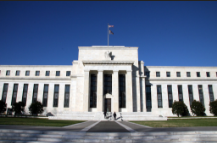Banks’ Unrealized Losses soon to be Realized
The timing of Jerome Powell’s appearance on “60 Minutes,” along with Janet Yellen and Ben Bernanke, is curious. Scott Pelley asked no penetrating questions, so nothing was learned. Fed Chairs aren’t know to hit the interview circuit. Bernanke appeared during the crisis to reassure the nation that the central bank can and will fix anything and everything.
Individual 1 tweeted in January, “The economy is doing great. More people working in U.S.A. today than at any time in our HISTORY. Media barely covers! @foxandfriends”
The folks at GNS Economics, in their “Q-Review 1/2019” report, contend, contrary to the president, “the global economic recovery since 2009 has not been real. It has been achieved with massive debt and monetary stimulus, which has created an economy where normal rules of the market economy do not apply.”
The emphasis of the GNS report is the economy’s fragility. The economy. “Is unable to stand on its own without ongoing massive debt and monetary stimulus.”
Powell and the ECB’s Draghi recent U-turns back to monetary stimulus support this notion. If central banks exist for anything it’s to keep commercial banks in business. Forget about full employment and a strong currency, the Fed’s job is to keep the banks open. And, when rates were normalizing or heading upward last year, what was it doing to U.S. bank balance sheets?
Wolf Richter at WolfStreet.com provides the highlights from the FDIC’s Quarterly report, and mentions a doozy of a detail--”US Banks Report $251 billion of ‘Unrealized Losses’ on Securities Investments in 2018, the Most Since 2008: FDIC”
These are “paper losses” so far and, as Richter explains, don’t impact bank bottom lines. Richter writes,
“Unrealized losses” are losses on securities that dropped in value but that the banks have not yet sold. In other words, they’re “paper losses.” Every quarter in 2018 brought steep unrealized losses: Q1: $55 billion; Q2: $66 billion; Q3: $84 billion; and Q4: $46 billion.
When interest rates go up, bond prices fall. Everything will be oakey-dokey if banks can hold the securities until maturity and are repaid in full. However,
if banks are forced to sell those bonds during a liquidity crunch, as happened during the Financial Crisis, the “unrealized losses” become real losses.
Richter points out that America’s banks hold nearly half a trillion in US Treasuries. That’s quite a concentration of debt extended to a borrower that on its books is $22 trillion in debt. Off balance sheet liabilities are multiples of that amount and the country’s budget deficit is running over a trillion a year. Government debt can never be repaid, only refinanced. This is referred to as Ponzi finance.
Mr. Wolf concludes,
So, it’s still a good time to be a bank – especially since $251 billion “paper losses” don’t need to be included in net income. But loan-loss provisions are starting to indicate that the credit cycle has turned, and that banks are preparing little by little for the next phase in the cycle.
The next phase may turn those paper losses into real ones. Powell’s TV appearance and sudden change of policy signals the turn is near.







